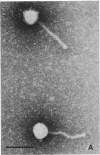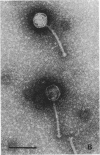Abstract
A temperate bacteriophage, designated r1t, was inducible from the group N lactic streptococcus, Streptococcus cremoris R1, by ultraviolet irradiation or mitomycin C treatment. Induced lysates produced plaques on lawns of three closely related S. cremoris strains, AM1, SK11, and US3. Strain SK11 was readily lysogenized. S. cremoris AM1 was the most reliable indicator strain, although the age of the culture used for seeding plates was critical. Zones of lysis but no plaque formation were observed on lawns of nine additional S. cremoris strains. Phage r1t could not be detected in filtrates of stationary-phase R1 cultures and was near the limits of detection in logarithmically growing cultures. Phage levels were still very low (1 plaque-forming unit on AM1 per 10 induced cells) in induced lysates of R1 cultures. These low levels of detectable phage may be attributable to an inadequate indicator, lysogenization of the indicator, adsorption of induced phage to cellular debris, concurrent induction of other undetectable phages, or the production of high proportions of defective phages. Electron micrographs of induced R1 lysates revealed a high incidence of incomplete phage particles, fragments, and ghosts.
Full text
PDF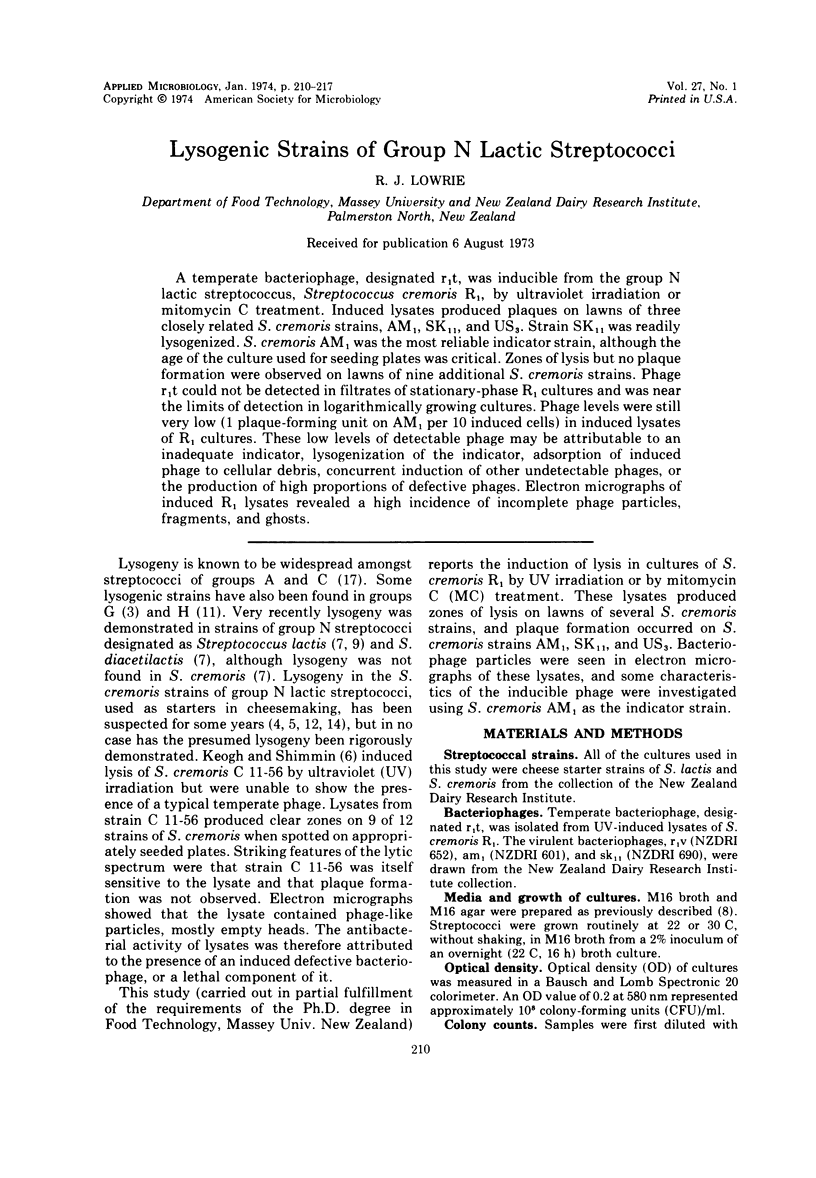
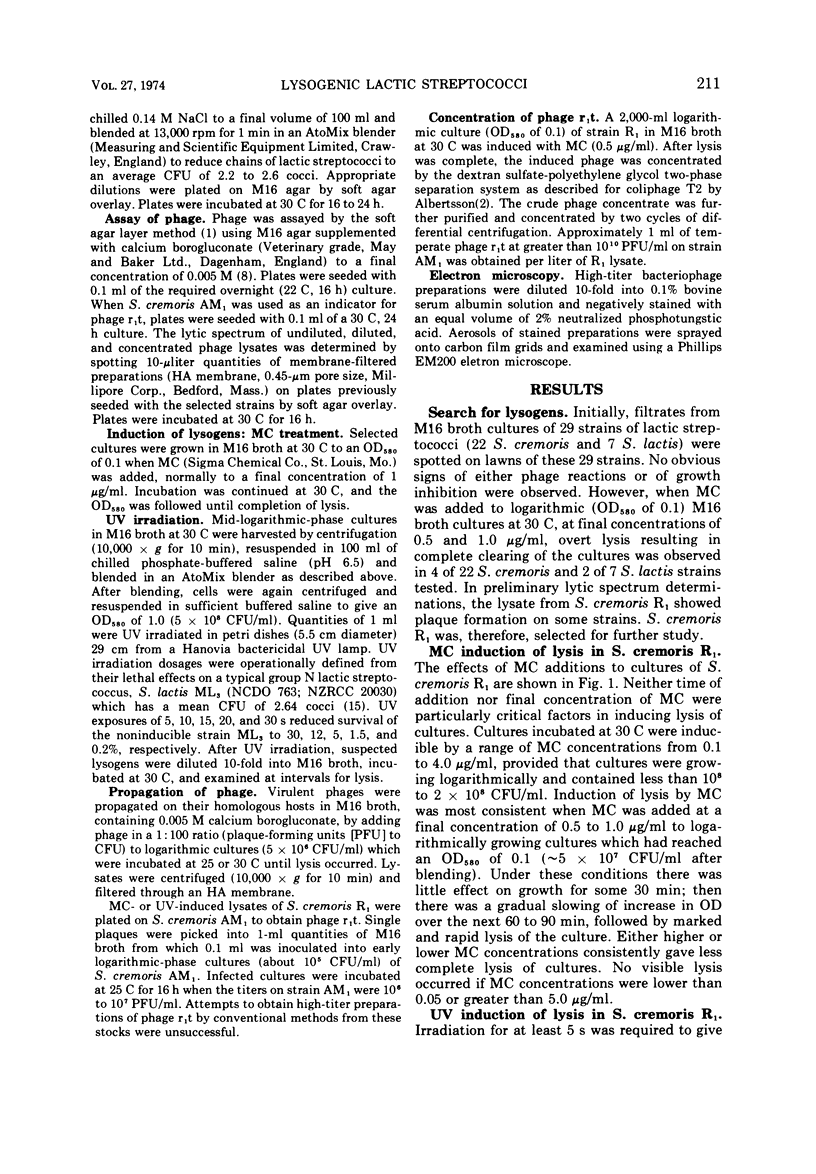
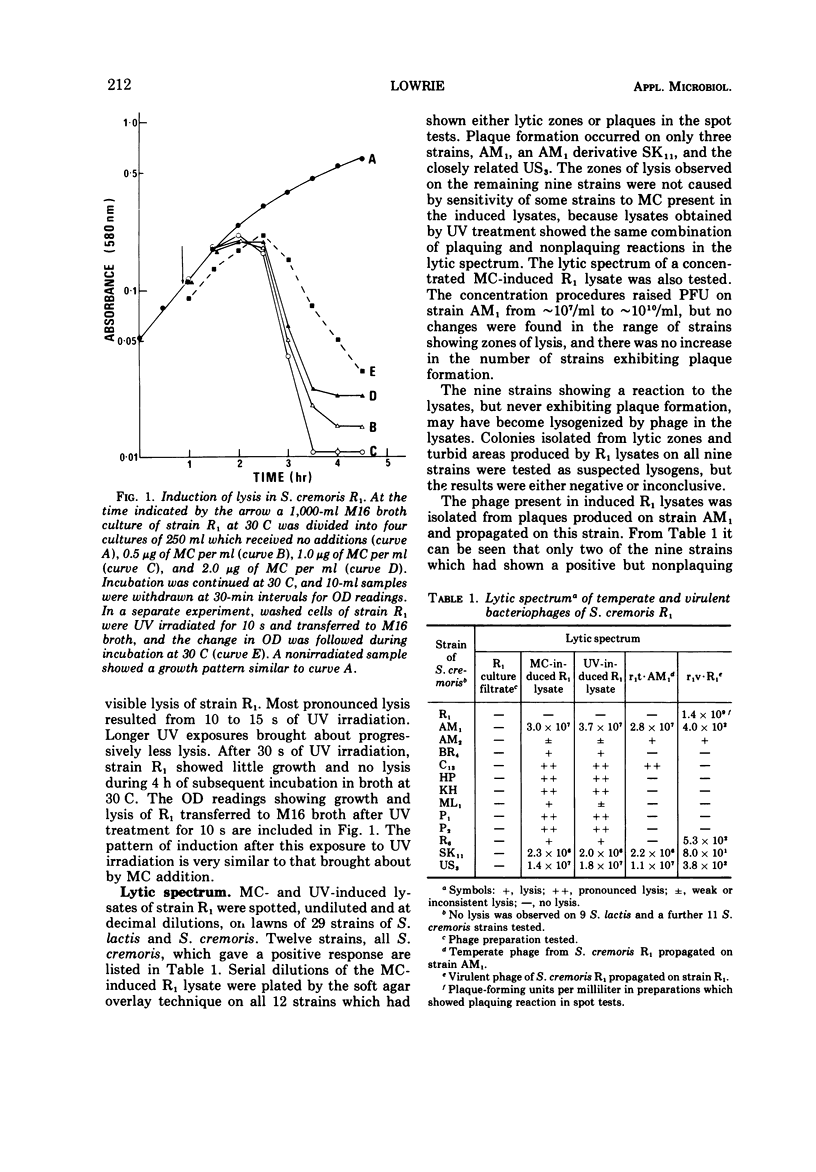
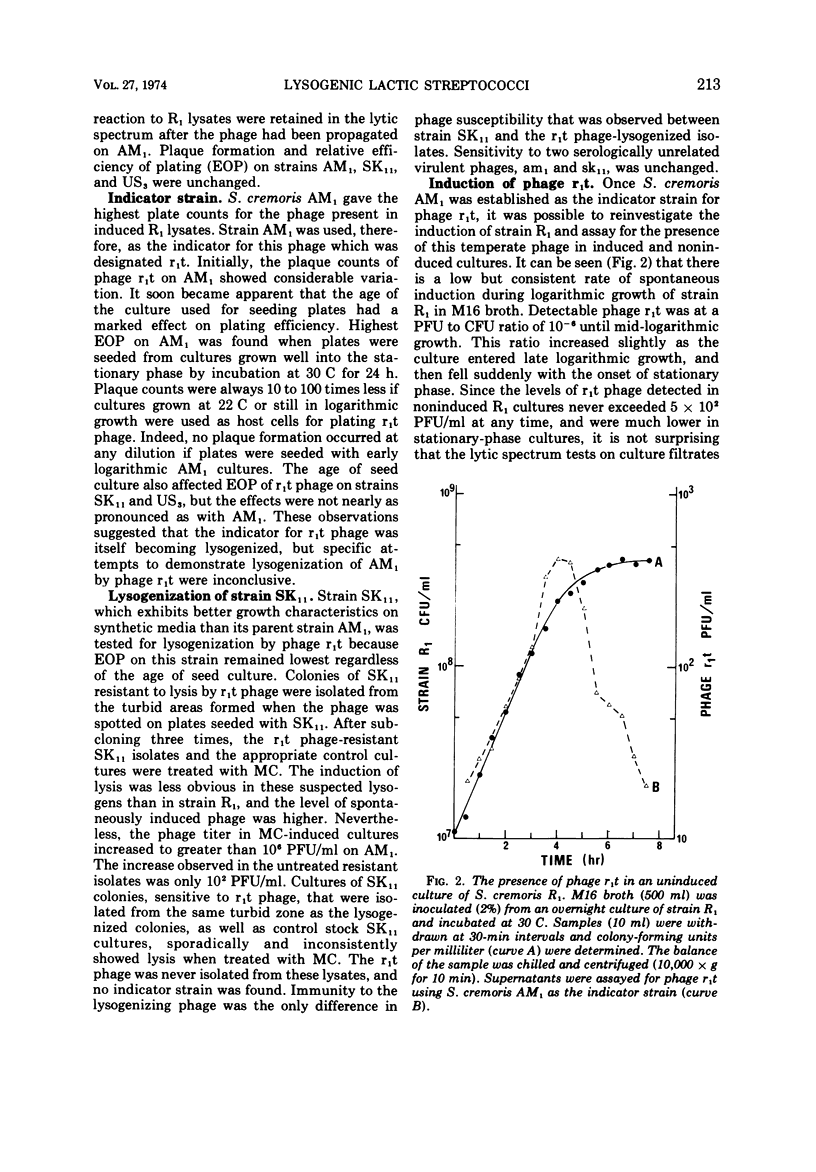
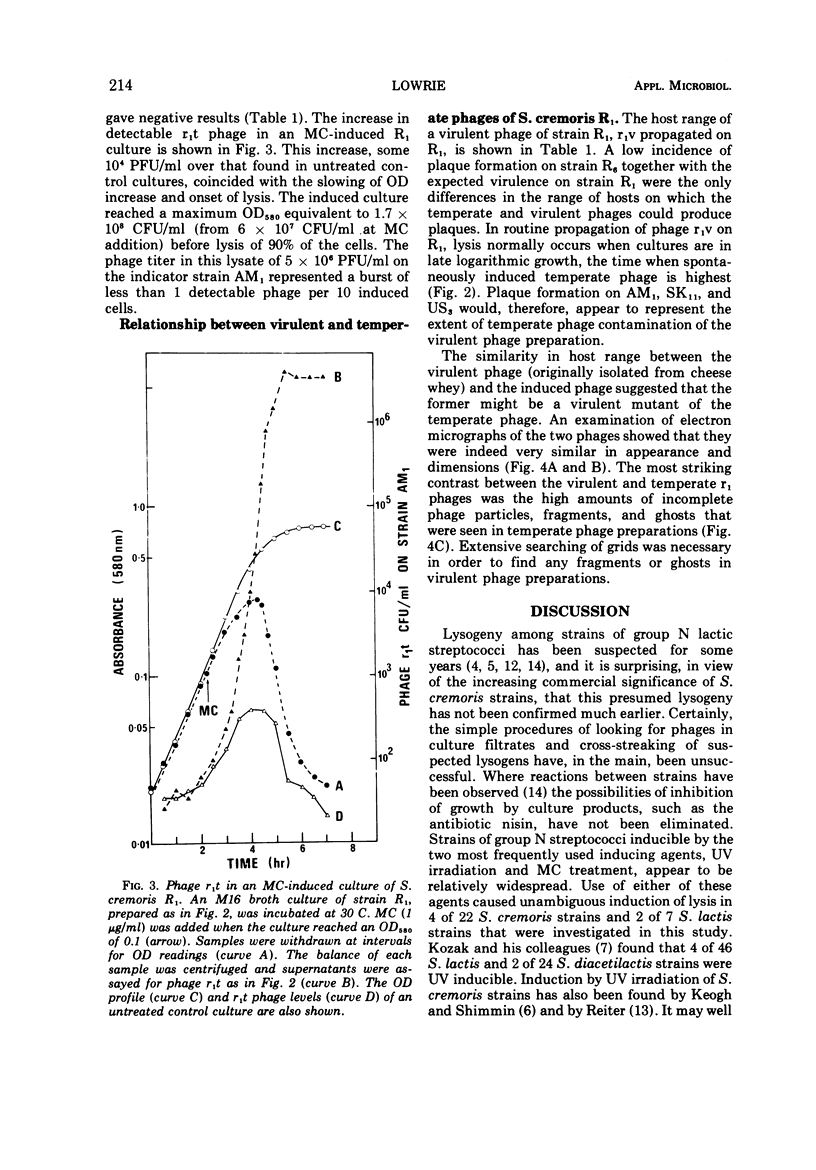
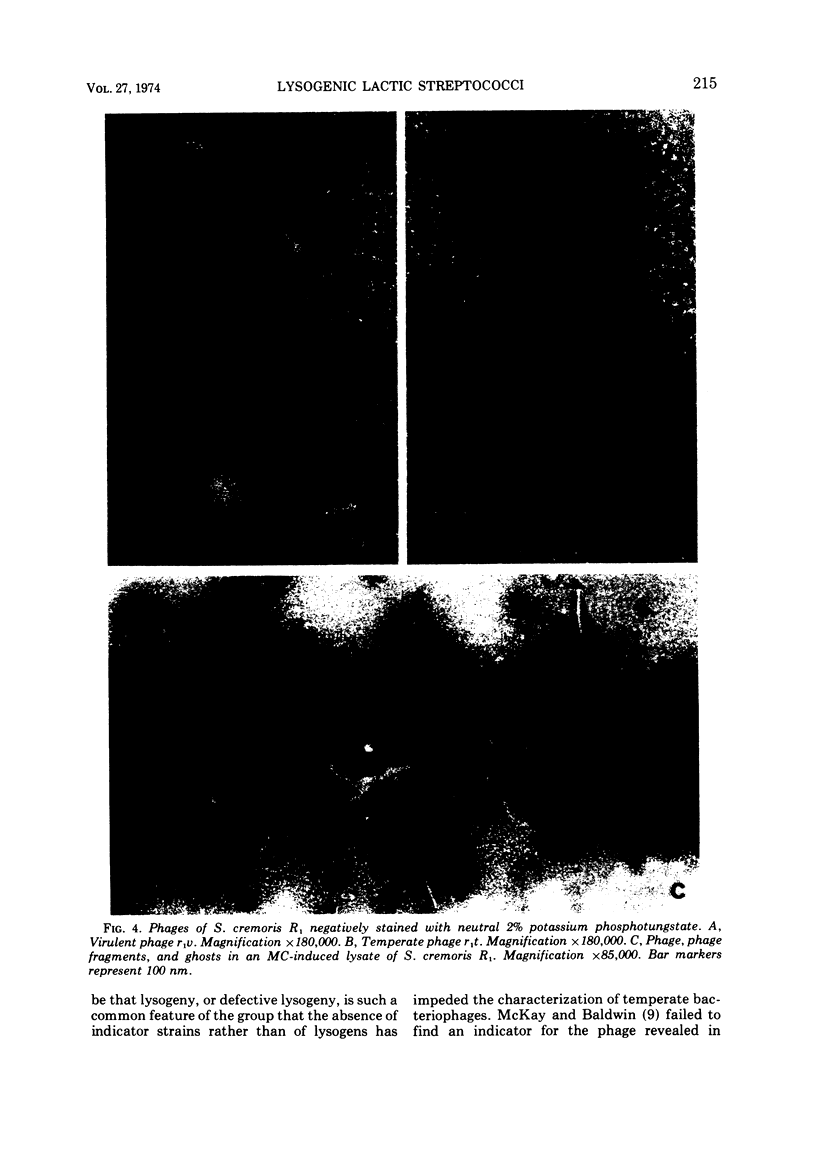
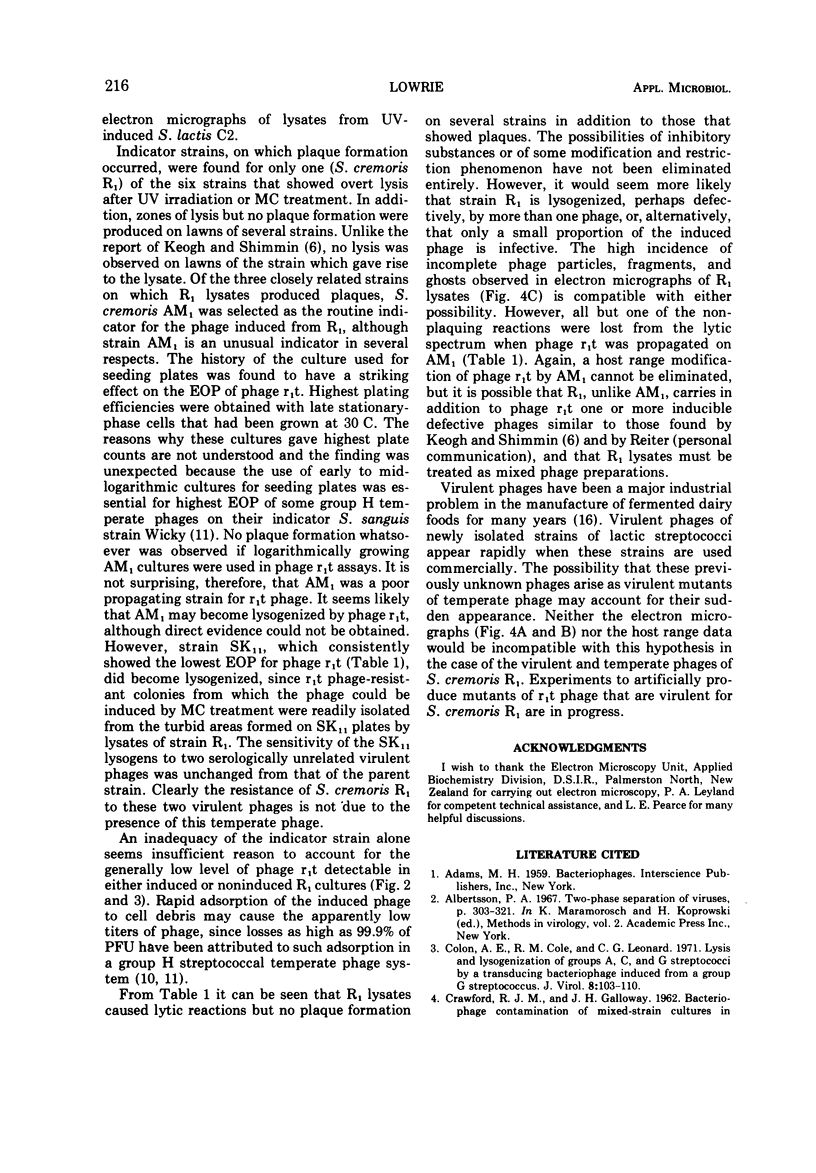
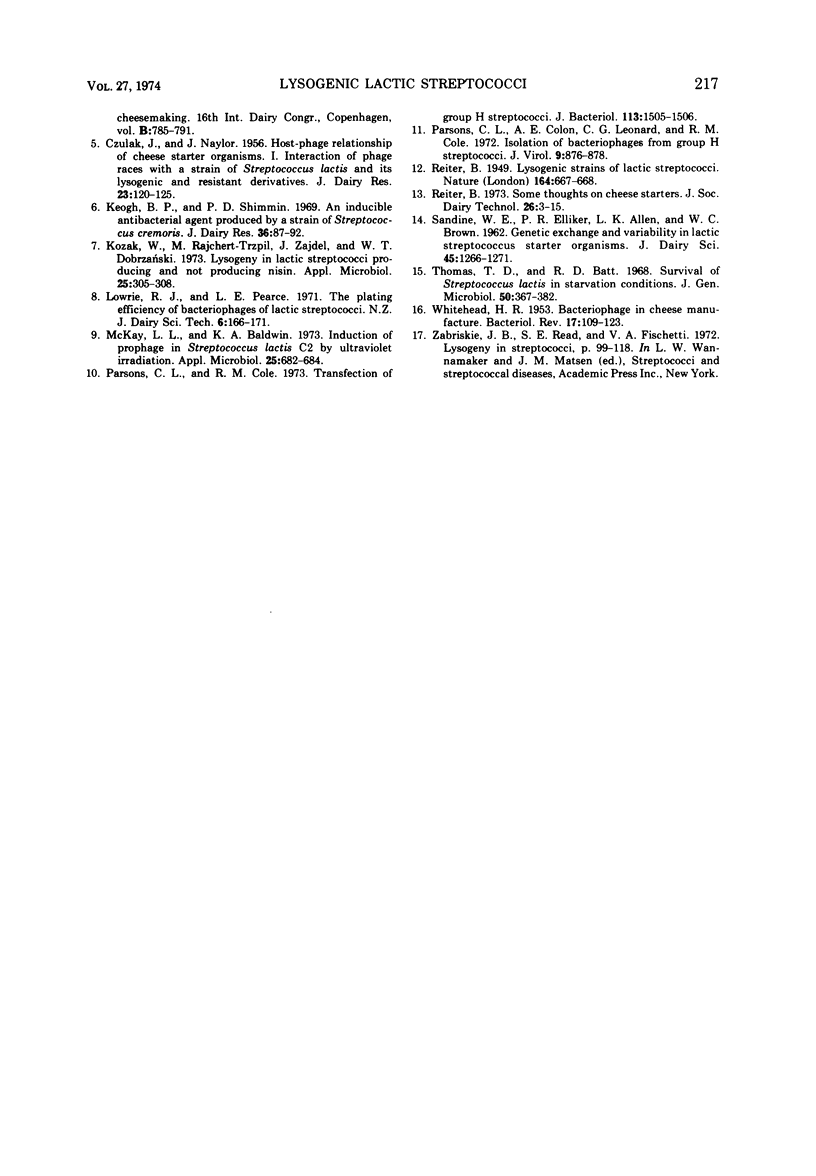
Images in this article
Selected References
These references are in PubMed. This may not be the complete list of references from this article.
- Colón A. E., Cole R. M., Leonard C. G. Lysis and lysogenization of groups A, C, and G streptococci by a transducing bacteriophage induced from a group G Streptococcus. J Virol. 1971 Jul;8(1):103–110. doi: 10.1128/jvi.8.1.103-110.1971. [DOI] [PMC free article] [PubMed] [Google Scholar]
- Kozak W., Rajchert-Trzpil M., Zajdel J., Dobrzański W. T. Lysogeny in lactic streptococci producing and not producing nisin. Appl Microbiol. 1973 Feb;25(2):305–308. doi: 10.1128/am.25.2.305-308.1973. [DOI] [PMC free article] [PubMed] [Google Scholar]
- McKay L. L., Baldwin K. A. Induction of prophage in Streptococcus lactis C2 by ultraviolet irradiation. Appl Microbiol. 1973 Apr;25(4):682–684. doi: 10.1128/am.25.4.682-684.1973. [DOI] [PMC free article] [PubMed] [Google Scholar]
- Parsons C. L., Cole R. M. Transfection of group H streptococci. J Bacteriol. 1973 Mar;113(3):1505–1506. doi: 10.1128/jb.113.3.1505-1506.1973. [DOI] [PMC free article] [PubMed] [Google Scholar]
- Parsons C. L., Colon A. E., Leonard C. G., Cole R. M. Isolation of bacteriophages from group H streptococci. J Virol. 1972 May;9(5):876–878. doi: 10.1128/jvi.9.5.876-878.1972. [DOI] [PMC free article] [PubMed] [Google Scholar]
- Thomas T. D., Batt R. D. Survival of Streptococcus lactis in starvation conditions. J Gen Microbiol. 1968 Mar;50(3):367–382. doi: 10.1099/00221287-50-3-367. [DOI] [PubMed] [Google Scholar]
- WHITEHEAD H. R. Bacteriophage in cheese manufacture. Bacteriol Rev. 1953 Jun;17(2):109–123. doi: 10.1128/br.17.2.109-123.1953. [DOI] [PMC free article] [PubMed] [Google Scholar]



